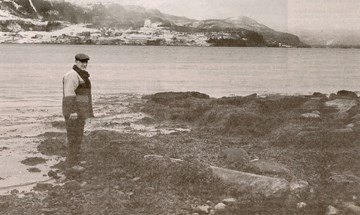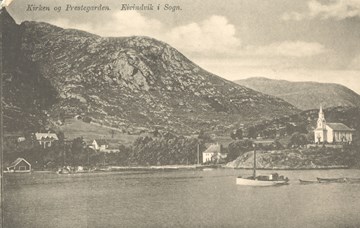


At Nornes in Sogndal there used to be three ancient memorial stones. Bishop Neuman refers to three of these in the early 19th century. I. C. Dahl painted one of them in 1827, and one is today placed on the premises of the museum "De Heibergske Samlinger-Sogn Folkemuseum" at Kaupanger. The latter has a strange newer history.

About 100 metres to the east of the Stedje church in Sogndal there is a runic stone measuring 1.89 metres in height and 0.39 metres in width. The stone was probably raised here some time in the Middle Ages.

The Eggja stone is one of the best known runic stones ever found in Norway. It contains the longest known inscription of the old futhark (early runic) alphabet, and it is still a riddle to researchers. Throughout the years a number of books and numerous articles have been written about it. In the Cultural Heritage Year 1997, the Eggja stone was chosen to be the cultural heritage monument for the municipality of Sogndal.

In former times burning beacons formed part of a network of warning system that the enemy was on their way. At times of unrest and national emergencies the beacons should be made ready to be lit, and beacon guards were posted to be in charge of this.

Dragseidet occupies a famous place in Norwegian history due to one major event: the christening assembly in 997, when King Olaf Tryggvason assembled important people from four counties with the sole purpose of converting them to Christianity. In the olden days, seamen had to haul their boats across the strip of land called Dragseidet in order to avoid the treacherous waters of Stad.

In the summer of 1999 Harald Bakke from Holmedal rescued a menhir from ending up at the bottom of the sea. The stone had lain in the pebbles, and year by year it had moved toward deep water. One year later the stone was erected beside two burial mounds on the seafront of the farm of Bakke.

On the island of Barmen there is rune stone ¿south along the shore". The runes date from the elder futhark alphabet with 24 signs. The inscription has been dated to the period AD 400 - 450. The rune expert Magnus Olsen has interpreted the inscription in the following way: I, Terbe¿s son carved the ear. Dr. philos Kjell Aarthun, holder of a state scholarship in oriental languages, has a completely different interpretation.

Svanøy was in former times a central place in the outer Sunnfjord region with a bailiff's residence and a church of its own. On the old churchyard on the island stands a stone cross with a runic inscription. The cross bears resemblance to the cross at Korssund further to the south. According to legend, the cross is said to have been moved from Brandsøy.

Two ancient stone crosses at Eivindvik have probably experienced the "Gulating" (a judicial and legislative assembly) and the introduction of Christianity. One of these has elegant, arched arms and stands in the field called Krossteigen on the slope up from the municipal house.

Two stone crosses at Eivindvik have probably experienced "Gulatinget" (a judicial and legislative assembly) and the introduction of Christianity. One of the crosses has straight, simple forms and stands at the gate to the churchyard.